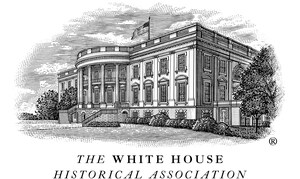Black Cloth: Mourning Dress and Drapery at the White House
WASHINGTON, Sept. 5, 2024 /PRNewswire/ -- The White House Historical Association debuts a new digital exhibit today in partnership with New York University's Steinhardt School of Culture, Education, and Human Development. Black Cloth: Mourning Dress and Drapery at the White House, examines the dress and décor used during times of mourning at the White House from the mid-19th century to the mid-20th century during the presidencies of William Henry Harrison, Zachary Taylor, Abraham Lincoln, James Garfield, William McKinley, Warren G. Harding, Franklin D. Roosevelt, and John F. Kennedy.
The exhibit is the result of a semester long internship offered by the Association to support the work of a NYU Costume Studies student. The 2024 internship recipient, Rachel Bellis, worked closely with the Association's David M. Rubenstein National Center for White House History and its Digital Library team.
Bellis' exhibit, Black Cloth: Mourning Dress and Drapery at the White House, examines how black cloth was a powerful part of public and private displays of bereavement at the White House. The digital exhibit explores the draping of the White House façade and its interiors with black fabric for the eight presidents who died in office, and the black mourning gowns and accessories worn by their spouses.
During her research, Bellis uncovered an 1893 appropriations act that prohibited the use of mourning drapery on federal buildings following the death of President James Garfield that would extend until First Lady Jacqueline Kennedy draped the North Door and State Floor of the White House in black cloth. Additionally, an image from the William McKinley Presidential Library and Museum in Canton, Ohio of First Lady Ida McKinley was digitized and is now available online for the first time.
"During my research process for this exhibit, I learned so much about how mourning was conducted at the White House for the eight presidents who passed away in office. The rituals surrounding mourning were very complex in the nineteenth century— it was fascinating to learn how those rules changed over time, but black cloth continued to play an important role. Looking at the fashions and textiles that the White House used for mourning the eight presidents who died in office, it is clear to me that black fabric was a key element tying together all those historic moments of grief," said Bellis.
"Rachel's dedicated research has opened a new door into the history of White House mourning traditions and has provided valuable knowledge that can be used for years to come," said Stewart McLaurin, President of the White House Historical Association.
Rachel Bellis is a Costume Studies MA student at New York University in the Steinhardt School of Culture, Education, and Human Development. Mourning fashion is a particular interest of hers; she researched a mourning gown at historic New Jersey home Kingsland Manor, which inspired her work on this exhibit.
Bellis' internship is from January through the end of August 2024.
For more information on the White House Historical Association, please visit www.whitehousehistory.org.
About NYU Costume Studies
Since 1979, NYU Steinhardt's MA Program in Costume Studies has focused on the history of dress and textiles in its broadest aesthetic and cultural context. It was the first curriculum in the U.S. to educate specialists in this field. With a core of courses on the history of fashion and textiles, the program trains students in the research and analysis of the fascinating phenomenon of dress.
About The White House Historical Association
First Lady Jacqueline Kennedy envisioned a restored White House that conveyed a sense of history through its decorative and fine arts. In 1961, the White House Historical Association was established to support her vision to preserve and share the Executive Mansion's legacy for generations to come. Supported entirely by private resources, the Association's mission is to assist in the preservation of the state and public rooms, fund acquisitions for the White House permanent collection, and educate the public on the history of the White House. Since its founding, the White House Historical Association has contributed more than $115 million in fulfillment of its mission. To learn more about the White House Historical Association, please visit www.whitehousehistory.org.
SOURCE The White House Historical Association

WANT YOUR COMPANY'S NEWS FEATURED ON PRNEWSWIRE.COM?
Newsrooms &
Influencers
Digital Media
Outlets
Journalists
Opted In





Share this article